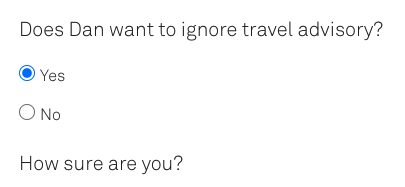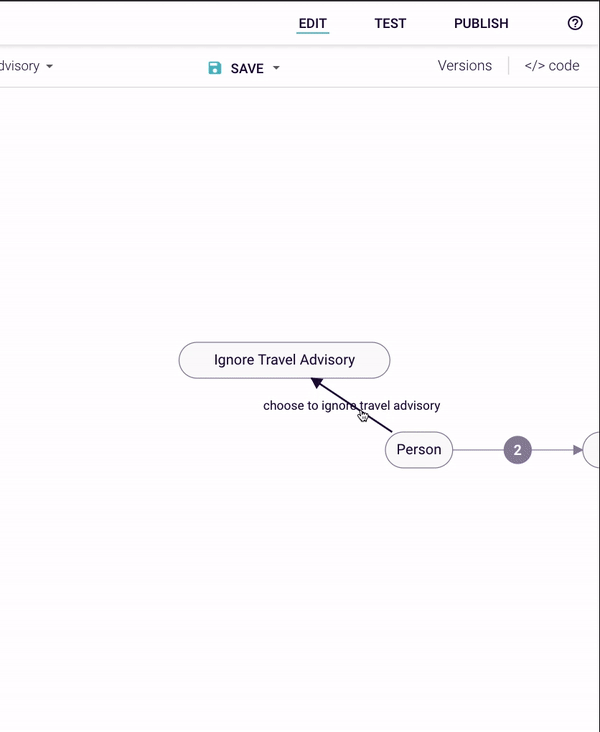First form questions function like boolean concepts. Rainbird already knows about the Subject and Object in the Relationship and asks a Yes/No question

Figure 2: A first form question
The question wording can be changed when editing the relationship:

Figure 3: Changing the First Form Question
The subject of the question is shown in brackets (in the above example, “Person and will be replaced with the Instance the user will create (their name) when running the query. The question can be rephrased by opening the relationship where the question will be asked (in the above example, “choose to ignore travel advisory”) and changing the text under the First form section.
A firstFormQuestion can only be asked if Rainbird knows both the object and subject of a relationship, requiring the User to confirm with a ‘Yes’ or ‘No’ answer.